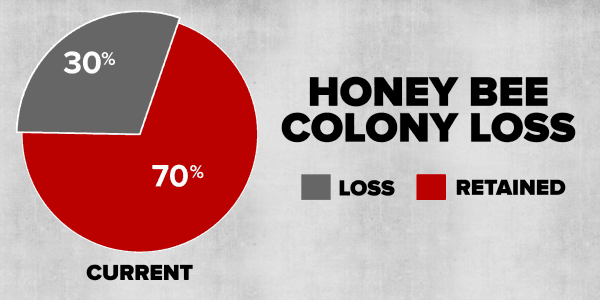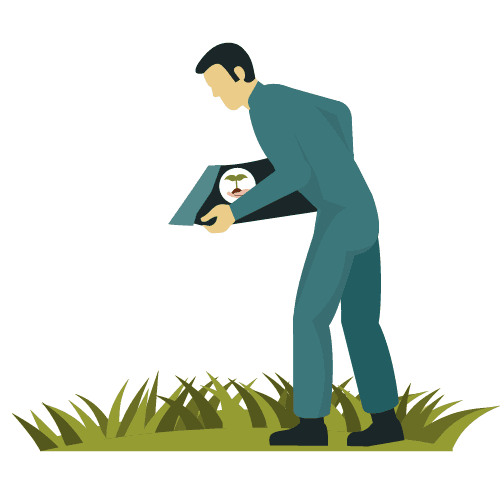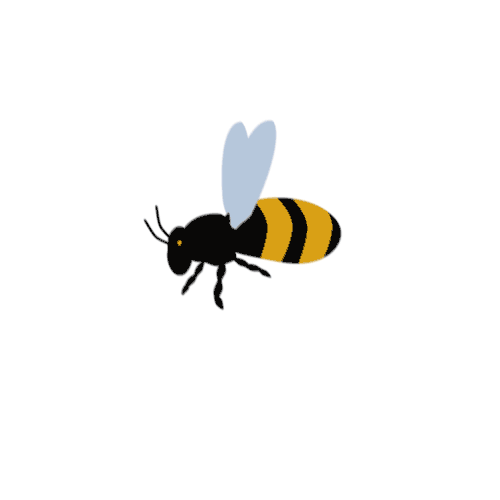How you can keep bees from becoming endangered
The way we live is threatening some of the world’s most productive agricultural workers.

Pollinators — including bees, butterflies, moths, bats, birds, beetles and other insects — contribute roughly $500 billion a year to global food production, said Reed Johnson, a researcher in Ohio State’s Department of Entomology.

Of that list, Johnson explained, the bee is one of the most important pollinator species to our food security and ecosystems.
Bees are responsible for pollinating about one-third of the world’s food supply. In the United States, honey bees alone provide pollination services valued at $15 billion to $20 billion annually.
There are more than 1,000 plants grown for food, spices, beverages, medicines and fibers that require pollination. Without the help of bees, the world would be without such well-loved foods as chocolate, coffee, peaches, almonds, tomatoes, blueberries, strawberries, apples, pumpkins, melons, vanilla and many other fruits, nuts and vegetables.

Johnson and other pollination experts throughout the world are unsettled, though. Bee populations in the United States are declining at a rapid, unprecedented rate. Since 2006, commercial beekeepers in the United States have reported honey bee colony loss rates averaging 30 percent each winter — startling, when compared to historical loss rates of 10 to 15 percent.
Native bee species such as bumble bees are suffering as well. The rusty patched bumble bee, native to Ohio, has suffered a serious enough decline that it was officially added to the endangered species list in early 2017.

Four ways to keep the bee population healthy
What is causing these profound losses?
“Urbanization, changes in the way we live and increased use of herbicides, insecticides and pesticides have all contributed to loss of bees,” Johnson said.
Pollinator decline is a big, complicated problem. But actually, it’s by no means unsolvable. Since a large part of the decline of bees is being caused by human actions ― pesticide use, urbanization and more ― it can be reversed by humans, too.
Here are four easy and effective ways you can do your part to help keep bee populations in your area healthy.
1. Provide a honey bee-friendly habitat in your yard or other outdoor spaces.

In a cement-paved, highway-crossed, skyscraper-filled urban environment, the food sources that are necessary for bees’ survival ― nectar from certain, native flowers ― are too few and far between.
“Providing an abundance of bee-attractive blooms concentrated in a small location, like a portion of your yard, can help,” said Sharon Treaster, a researcher with Ohio State’s Department of Horticulture and Crop Science. “This will create dense forage that lets honey bees build up food reserves for rainy weather and winter survival.”
Ideally, maintain a variety of flower or tree species with a fair amount of blooms from each species. Because the types of ornamental flowers that are commonly planted in yards do not produce enough nectar for bees, opt for bee-attractive blooms like crocus, sweet alyssum, sunflowers, coneflower, butterfly weed, geranium, bee balm, poppies, black-eyed susan, clover or apple trees.
If you live in the Buckeye State, visit Ohio State’s own pollinator habitat for inspiration.
2. Eat bee-friendly.

Much of our food is grown in a way that relies heavily on the usage of pesticides, which can be highly toxic for bees. The less food that is produced using pesticides, the fewer bees will be exposed to these harmful chemicals.
Organic food is grown without the use of pesticides, and purchasing honey supports bee populations in managed hives.
“Increased urbanization has meant a social change in which you just see less beekeeping. People who live in the city don’t commonly have the space and time to keep bees like the people who lived in the country did 150 years ago,” Johnson said.
3. Avoid the use of insecticides on your lawn.

If you must use one, read the label to see if it’s toxic to bees before purchasing. Limit the use of herbicides, which are not directly toxic to bees, but kill the flowering “weeds” bees need for food.
4. Don’t kill bees. Just walk away.

With so many factors working against their numbers, bee populations need all the help they can get. A couple of mating pairs in an area could make the difference between an eventually healthy bee population or none at all.
Model bee-friendly behavior for children and peers, and when you see a child or peer kill or harm a bee, gently call them out on it.